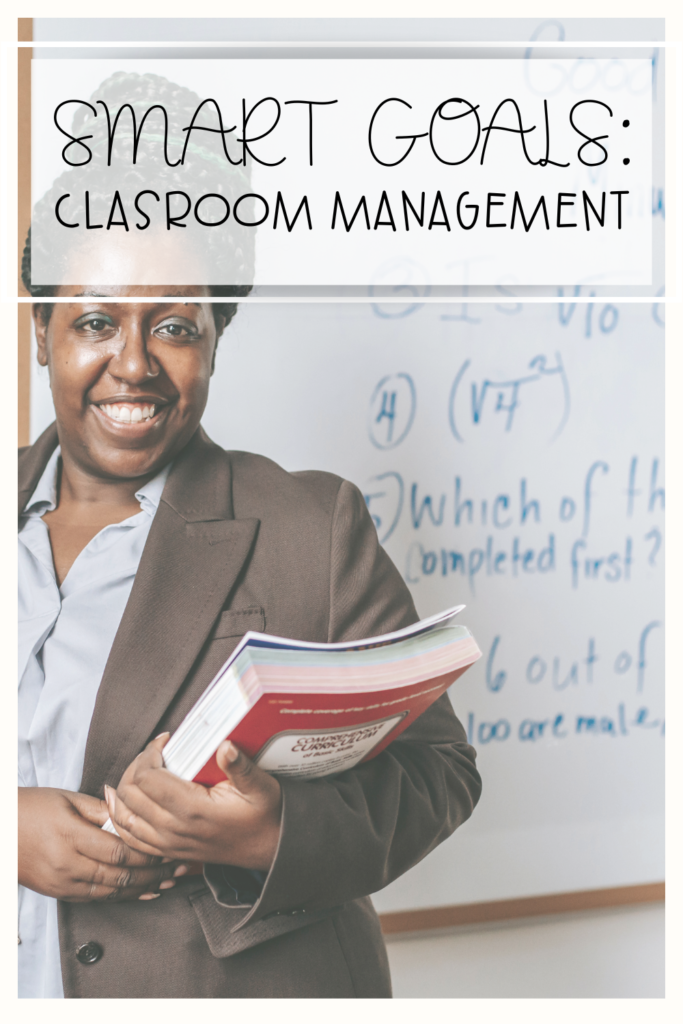Reflecting and Setting SMART Goals for Teachers’ Classroom Management
As the school year ends, many of us are ready to flip those light switches into the off position, close the door, and walk away from the classroom to end our much-needed (and earned) summer vacation. However, as teachers, we also need to take a moment to reflect on our classroom successes and challenges. Reflection is key because it allows you to evaluate what worked well and what didn’t, providing valuable insights for setting goals for the next year. Using SMART goals for teachers’ classroom management, you can create a structured plan for continuous improvement and professional growth.

What Are SMART Goals?
SMART goals are Specific, Measurable, Attainable, Relevant, and Time-bound objectives that help teachers set clear and achievable targets. These goals provide a clear roadmap for professional development and classroom management, ensuring that efforts lead to tangible improvements in student learning and the classroom environment.
How Can Teachers Use SMART Goals?
Teachers can use SMART goals to focus their efforts on areas that need improvement and track their progress. Setting specific goals helps stay organized and motivated, whether it’s enhancing lesson plans, boosting student participation, or developing new instructional strategies. Ask yourself questions before settling on a specific SMART goal. Do I need to work on my procedures and routines? Could my transitions be a little faster/cleaner? Did I struggle to reset the classroom after a school break? SMART goals provide a structured approach to achieving professional goals and improving teaching skills.

SMART Goals for Classroom Management
Effective classroom management is crucial for creating a positive learning environment. Here are some examples of SMART goals for teachers:
- Specific: Implement a new behavior management system to reduce classroom disruptions.
- Measurable: Track the number of behavior incidents weekly and aim to reduce them by a specific percentage or amount by the end of the semester.
- Attainable: Gradually introduce a behavior management system, starting with one class period and expanding to all by mid-semester. You could use a star jar or a classroom behavior board.
- Relevant: Improving classroom management will lead to better student engagement and academic success.
- Time-bound: Fully implement the new system by a specific time period so you are held accountable and stick to the goals above.
Reflecting on the School Year
Reflection at the end of the school year is important for all teachers who are looking to continuously grow within their profession. Evaluate what worked well and what didn’t by considering student feedback, test scores, and personal observations. This process helps identify areas for improvement and celebrates successes, guiding your goal-setting for the next year.
Learning from Mistakes and Problems
Viewing challenges as learning opportunities fosters a growth mindset. Analyze problems critically to develop problem-solving skills and new strategies. Set relevant goals to address these issues and plan professional development activities like workshops or online courses to gain new insights and skills.
Recommended Classroom Management Books
Here are a few classroom management books many teachers have found useful throughout their careers. No one classroom management strategy works for all teachers, so it’s important to look at multiple resources, like the books below, to help you find and determine the best ones for you.
The First Days of School by Harry K. Wong and Rosemary T. Wong
This comprehensive guide covers effective teaching practices and classroom management techniques to create a successful classroom environment from day one.
Classroom Management That Works by Robert J. Marzano
Based on extensive research, this book provides strategies for improving student outcomes through effective classroom management.
The Classroom Management Book by Harry K. Wong and Rosemary T. Wong
A practical guide with tips and techniques for teachers to manage their classrooms efficiently and create a positive learning environment.
Teach Like a Champion by Doug Lemov
Offers a collection of techniques that help teachers achieve classroom excellence and improve student engagement and performance.
Setting Limits in the Classroom by Robert J. Mackenzie
Provides clear strategies for establishing rules and consequences, helping teachers create a structured and disciplined classroom.

Setting SMART Goals for the Next School Year
As you prepare for the new school year, set professional goals that align with your reflections and identify areas for improvement. Whether improving parent-teacher communication, enhancing lesson plans, or pursuing leadership roles, SMART goals provide a structured approach to achieving long-term goals and fostering educational excellence.
By reflecting on the past year and setting SMART goals for teachers’ classroom management, teachers can incorporate continuous growth into their teaching careers. These practices enhance personal development and positively impact student performance and classroom management. As you plan for the next academic year, remember that setting clear, achievable goals is the best way to ensure professional growth and student success.

